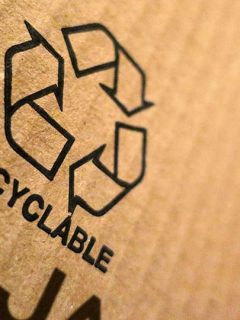From cave paintings to papyrus and from printing to computers, communication has undergone tremendous evolution. When it comes to communication, paper has been a fixture in our regions for over 500 years. Newspapers, restaurant menus, coasters, labels or invoices… paper has so many applications. But not every type of paper is suitable for the same use. Still not sure which one to choose? Then just follow this selection guide and get the printing paper that fits your business perfectly.
1. What are the 3 basic characteristics of printing paper?

Printer paper comes in different formats, but we measure quality in each case by three properties: thickness, whiteness and smoothness. Together, they determine what you can best use your paper for. This can range from a simple black-and-white printout to a high-quality document with the sharpest and brightest colour prints.
► 1.1 Thickness
The thickness of paper is expressed in number of grams per square metre (g/m²). It depends on, for example, the amount of pulp, coating and the type of paper fibre used. Paper with a thickness of 80 g/m² is usually considered the standard. Good to know: thicker copy paper absorbs more ink moisture, among other things, so it will not wavy. This comes in very handy if you decide to print double-sided.
► 1.2 Whiteness
Whiteness is an important factor for the print quality of your paper. The higher the whiteness, the clearer the ink on the paper and the brighter the colours appear. We express the degree of whiteness in CIE (Commission internationale d’éclairage). This formula is used to calculate the amount of light reflected on the paper. For example, CIE 150 reflects more light than CIE 95. So a higher whiteness automatically means better printing of your colours. Copy paper can be bleached via a chemical process on the one hand and natural whiteners on the other.
► 1.3 Smoothness
This characteristic used to vary from rough to smooth, but today almost every copy paper is smooth. A smooth piece of paper is less likely to jam in a printer, provides a more precise print and therefore uses less ink. You are more likely to find rough paper suitable for taking notes on.
]2. What sizes of paper are there?
Worldwide, we use different paper sizes with several designations. To curb the Babylonian confusion of tongues, international standards were established in the past (with the exception of countries such as the USA and Canada). The super-famous A4, for instance, is part of the ISO 216 standard, while a C5 falls under ISO 269. Below we go over the most common formats.
► Format A
In Europe, the A-series is undoubtedly the most commonly used paper size. Have you ever wondered exactly what A4 or A5 means? If you fold the basic format (A0) four times, you end up with the very familiar A4 format. The same logic applies to the other ranges, by the way.
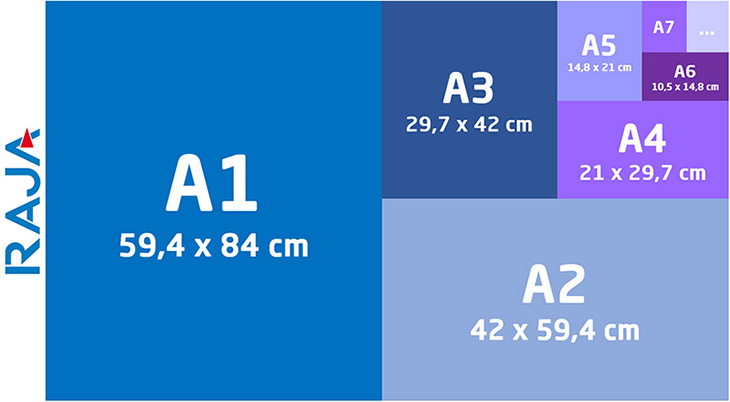
Classification of paper format A0
► Format B
The A-series generally contains the most commonly used paper sizes, but who says A must also say B. The B-series has larger dimensions than the A-series and is therefore used for special formats that the A-series cannot meet. Think of special formats for printing books, posters or displays. So the B-series format is usually not so suitable for everyday printers. It is precisely for this reason that these formats are usually used by professional printers.
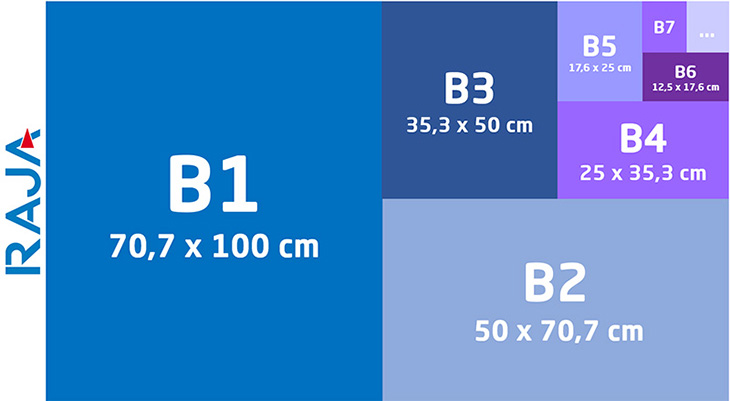
Format B0 paper format
► Format C, D and E
Formats C and E are designed as rectangular envelopes to send A and B formats respectively. An A4 sheet fits perfectly into a C4 envelope, just as a B4 sheet fits into an E4 envelope. Last but not least, the D-series exists to supplement the sizes that A and B do not have. A perfect in-between size, as it were.
► Format DIN and Square
These two particular formats have a slightly different shape than a classic sheet of paper. DIN is narrower and more elongated than standard printing paper, while Carré has just a square shape. Their special shapes are therefore used for specific printed materials such as menus and square greeting cards.
]3. Choice guide: what are the applications of printer paper?
Printing paper and copy paper have a wide arsenal of applications, especially within a business. The paper’s thickness, whiteness and smoothness largely determine what you will use it for. We distinguish between 4 types of paper below, depending on their applications.
- printer paper is always recyclable?
- printer paper has a standard thickness of 80 g/m²?
- RAJA's printer paper bears ecological labels such as PEFC, FSC, Blauer Engel and the Ecolabel? In other words, the paper is designed to have minimal impact on the environment throughout its life cycle.
Standard printing paper 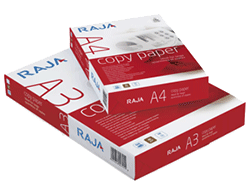 |
. |
Recycled printing paper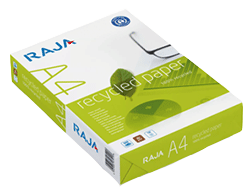 |
. – Application: single-sided printing. – For 1-colour printing. – Whiteness: low quality CIE 135. – Available in A4 size. – Choose an eco-friendly image: made of 100% recycled fibres. Without chlorine-whiteners. |
Multi-purpose printing paper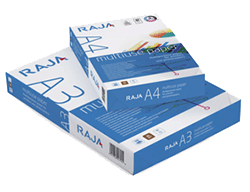 |
. |
Premium printing paper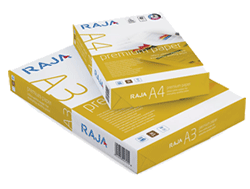 |
. |













